I say no — too distracting. Let people track the stream on their own. Attention should be on the speakers.
Page 19 of 142
Rob Bearden, CEO of Hortonworks, says the software portion of the market will by $24 billion by 2017 and $50 billion by 2020. And Hadoop will be processing "half of all big data" by 2020. "It will create even more value than early ERP." And he must have said Hortonworks is "an enterprise-viable platform" twelve times… 🙂
In his opening remarks, Paul Walborsky, CEO at Gigaom, says "Big Data has legs — it's here to stay." Derrick Harris says, "Every year I say I'm excited — this year I mean it." Actual applications! [@BigDataWild likes that… 🙂 ]
Joe Weinman, emcee (shown), note that Structure Data is, ironically, actually more about *unstructured* data.
 And I'm looking forward to reporting on this high-level gathering: the Gigaom Structure Data conference. It's billed thusly: "The industry's leading denizens share their views on big data and its impact on the information economy."
And I'm looking forward to reporting on this high-level gathering: the Gigaom Structure Data conference. It's billed thusly: "The industry's leading denizens share their views on big data and its impact on the information economy."
That's right: big minds sharing deep thoughts on a humongously hyped topic — what could be more fun than that? But it won't be just big companies represented at this fine event, there'll be lots of smaller ones, too — including my favorite kind: #startups. And you  know what they say: pretty much every tech startup today is a data startup of one sort or another — or will be. That's what happens when a topic is hyped as breathlessly as Big Data is — it permeates damn near everthing. Even your mother has asked you about it.
know what they say: pretty much every tech startup today is a data startup of one sort or another — or will be. That's what happens when a topic is hyped as breathlessly as Big Data is — it permeates damn near everthing. Even your mother has asked you about it.
So, why am I going? Well, first of all, I've had a media pass to a Gigaom event before, and was impressed by the quality of their events. And this one gave me a chance to visit my son and his wife, who recently took up residence in Manhattan, where I haven't been in years. (I like my conferences mostly in California and Colorado, thank you very much.) That, plus the fact that I've been focusing a lot of my attention in data and analytics of late, right here in Minnesota. We have a large contingent of big data professionals in the state — mostly big-company types at our 20 Fortune 500s, of course, but some very interesting startups as well. I've become quite involved with a wonderful professional meetup-type group called Minneanalaytics.org over the past couple of years. Get this: our database now numbers 3700 data professionals across 600 organizations! (Follow Minneanalytics on Twitter.) It's a great group of people — lots of energy and smarts around the burgeoning, rapidly growing field of Big Data. I'm on the organizing commitee and have assisted with several Minneanalytics events, which have attracted up to 900 attendees. I'm specifically involved in engaging more of the startup community with the organization, and I also help manage the organization's social media presence.
My involvement in Minneanalytics and helping with content curation and community engagement got me to thinking beyond just our Twitter and email list communications, however. What might be another way I could help spread the love — and the need to keep up on the latest — around this thing crazy, hot topic of Big Data?
As a huge user of the Flipboard app since day-one of the iPad in 2010, it hit me: why not launch a Flipboard magazine on the topic? I hadn't done one before. I noted there were others who had already started Big Data magazines, but they were way geeky. I thought there might be room for one with a little different focus: on real-world uses for Big Data — how the technologies were being applied in ways that even everyday people could understand, in a wide variety of fields, professions, and vertical markets. I figured there was more than enough to content to begin — and I was right. 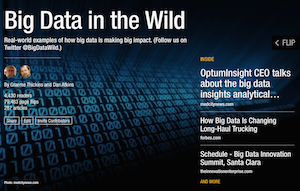
So one day, on a lark, I launched my first Flipboard magazine, Big Data in the Wild (shown at right). I subtitled it "Real-world examples of how big data is making big impact." Fast forward: in just four months, it has more than 4600 subscribers and almost 89,000 page flips. Flipboard features it regularly on its Daily Picks, and Mike McCue, Flipboard's CEO, has even told me "great magazine!" So, I'm committed now! (As the magazine got establshed, I asked a colleague, Dan Atkins, one of the cofounders of Minneanalytics, to be a contributor to it.)
But after I recently committed to making the trip to the Big Apple, I started thinking… hmmm, being a magazine publisher now — haha, I mean a content curator — how could I, as a longtime reporter and blogger at tech conferences, not cover this event for my own magazine? It was just too much of a crazy notion not to do it. So, here's what I'll be doing this week: publishing blog posts during and after the event and, you got it, flipping those posts into my magazine.
 But wait, there's more! How can a magazine exist without a Twitter account? That would be just cruel. So, a week or two ago, I started @BigDataWild on Twitter, and have since built up a nice little, well focused following of professionals, which continues to grow. Naturally, I'll be tweeting links that will — yep! — take people to the magazine!! …to the posts I'll be writing about the event. Now how recursive is that? But who am I not to create more data! Post, publish, link, flip, tweet, link back — feed the stream!
But wait, there's more! How can a magazine exist without a Twitter account? That would be just cruel. So, a week or two ago, I started @BigDataWild on Twitter, and have since built up a nice little, well focused following of professionals, which continues to grow. Naturally, I'll be tweeting links that will — yep! — take people to the magazine!! …to the posts I'll be writing about the event. Now how recursive is that? But who am I not to create more data! Post, publish, link, flip, tweet, link back — feed the stream!
If you'll be at Gigaom Structure Data, be sure to say hello. I'd enjoy meeting! You can still register here. And, if you need convincing the agenda is worthwhile, read these two recent posts from Gigaom writers that will give you a flavor of what to expect:
• 5 Things that Will Remake Big Data in the Next 5 years
• Upcoming Gigaom Event: Three Innovators Who Are Shifting the Big Data Landscape
Here's to a really BIG time!
Attention anyone buying or selling a home in the Twin Cities metro, or who may be someday: a new alternative is available starting today — and techies will especially appreciate it. Redfin is in town.
Based in Seattle and founded in 2004, Redfin was actually the first company to put homes for sale on a  searchable map online. It represents people either buying and selling a home. Founded and run by technologists, it has a team of experienced, full-service real estate agents who are advocates, not salespeople. Get this: they earn customer-satisfaction bonuses, not commissions.
searchable map online. It represents people either buying and selling a home. Founded and run by technologists, it has a team of experienced, full-service real estate agents who are advocates, not salespeople. Get this: they earn customer-satisfaction bonuses, not commissions.
"We selected the Twin Cities as our first new market to open in 2014," said Bridget Frey, Redfin VP-Seattle Engineering. "We chose it because of the strength of the economy there, the concentration of universities, and a population that knows technology.'
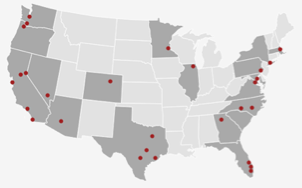 Redfin's web site features not only all the broker-listed homes for sale, but for-sale-by-owner properties as well — the ones that don't pay brokers a commission. The other cool thing is Redfin has a variety of online tools and mobile apps that make the entire process of buying or selling a home "easier and more fun." The company serves 23 U.S. markets (see map) and has closed some $13 billion in home sales since its founding.
Redfin's web site features not only all the broker-listed homes for sale, but for-sale-by-owner properties as well — the ones that don't pay brokers a commission. The other cool thing is Redfin has a variety of online tools and mobile apps that make the entire process of buying or selling a home "easier and more fun." The company serves 23 U.S. markets (see map) and has closed some $13 billion in home sales since its founding.
On its web site, the company says "Technology is why our agents get you into a hot property faster." And "it's how we promote your listing to the most buyers." But what really got my attention is how it promises to "put money back into the pockets of both buying and selling customers." Redfin refunds homebuyers a portion of the buyer's agent commission. For a $500,000 home, a Redfin homebuyer in the Twin Cities would save more than $4,000. For listing clients, Redfin agents charge 1.5 percent rather than the typical 3.3 percent of a traditional agent, "while providing the full listing service, from pricing and staging advice and professional photography through the negotiation and closing processes." For someone selling a $500,000 home, that equals a savings of $9,000.
Redfin has many online and mobile technology tools. For example:
• Home Value Tool – lets customers estimate the value of their home based on up-to-date home sale prices, details, and photos used by real estate agents.
• Search by School – shows all homes for sale within the boundaries of a particular school with one easy search.
• Instant Updates – immediately alert home-buyers about new listings and price drops. People using Redfin to search for listings in a given area will get an alert 15-30 minutes after a real estate agent lists a home for sale. Users of any other major real estate website have to wait till the next day. Either smartphone or email notifications are sent when new homes are listed or when the status or price of a “favorited” home changes.
For its debut in the Twin Cities market, the company said more than one million homes have been added today to its searchable database of active listings and sold homes in parts of Hennepin, Ramsey, Anoka, Washington, Dakota, Scott, Carver, and Wright, counties that make the largest portion of the Twin Cities metro area by population. For parts of these counties that Redfin doesn’t service directly, customers can work with Redfin's partner agents. The company will expand its direct service to include the entire 13-county metro area as its business here grows. It is actively recruiting more agents. In addition, the company just told me, hours before their debut today, that "we have successfully enabled state.pngde search for Minnesota. That means that you can see and search for all the homes for sale anywhere throughout the state."
I asked software VP Bridget Frey to describe further how her team works. "Our model is very different. We break down every step of the process. It's all based on continual conversations between agents and developers. We make sure they work closely together." She said Redfin's product managers and software engineers both regularly travel throughout the country to "shadow" agents in their daily work. "It's all about getting an optimal experience for the buyer or seller. The best solutions are often not what the developer first envisioned, and in many cases what neither the agent nor developer would have thought."
The company employs hundred of engineers in Seattle and the Bay Area, as well as hundreds of agents throughout the U.S. The Redfin model is different from that of other brokerages in the way it "aligns agent and customer interests." Unlike traditional real estate agents, Redfin agents are paid a salary and benefits, with customer satisfaction ratings – not transactions – determining the agents bonus. All reviews for all Redfin agents are published online. More about the Redfin model here. And about its data quality here — which it says is a major differentiator: "We make it our business to have the most accurate data out there, updated every 15 to 30 minutes so you'll never miss out." Other sites that provide online listings nationally include Zillow and Trulia, but they have very different models, said Redfin's Frey.
"We are a 'real world' real estate brokerage," she said, "which means we have a local presence where we operate — local people, who know the local market." To that end, Redfin hired Chris Prescott as its Minnesota market manager. “When I heard Redfin was coming to Minnesota, I knew I had to be part of their mission to change real estate here in the Twin Cities,” he said. “After being in the business for 20-plus years, I am very excited about the opportunity to change the way real estate is done and make it better for buyers, sellers and agents.”
Redfin is recruiting more agents in the Twin Cities metro area. Its pitch: "We believe real estate should be built on exceptional client service and advocacy, and we need passionate agents like you to advance our vision. Motivated clients come directly to you through our website, so you can focus on providing impeccable service — not selling yourself. Come hungry: Redfin Agents close an average of three deals per month versus the industry average of six deals per year."
Here's the full news release about Redfin's Twin Cities launch.
(NOTE: This post first appeared earlier today on Minnov8.com.)
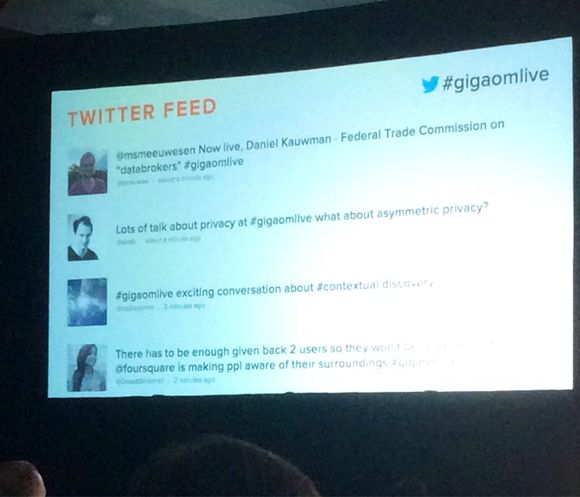
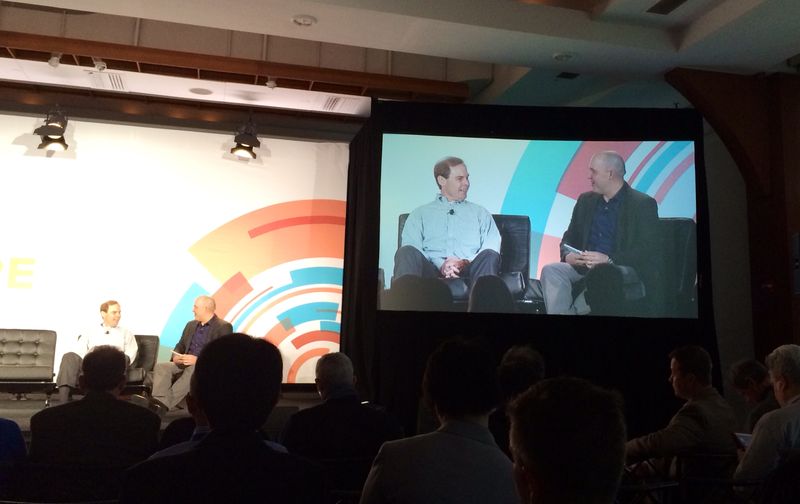
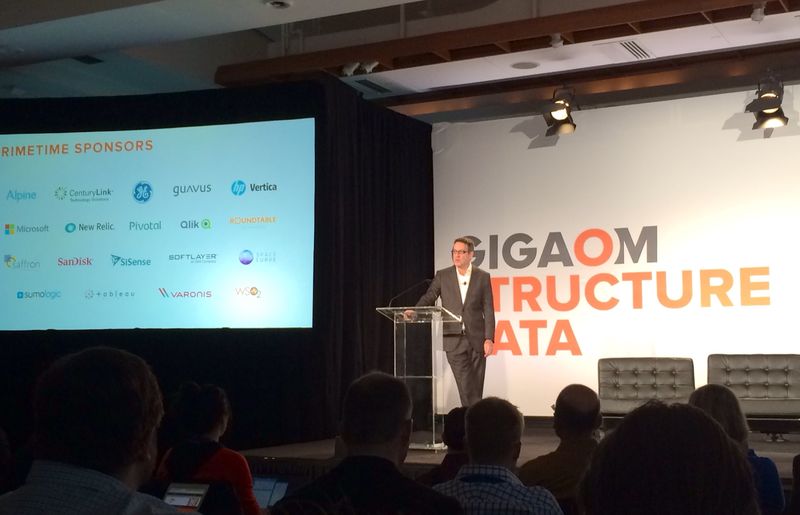

Recent Comments